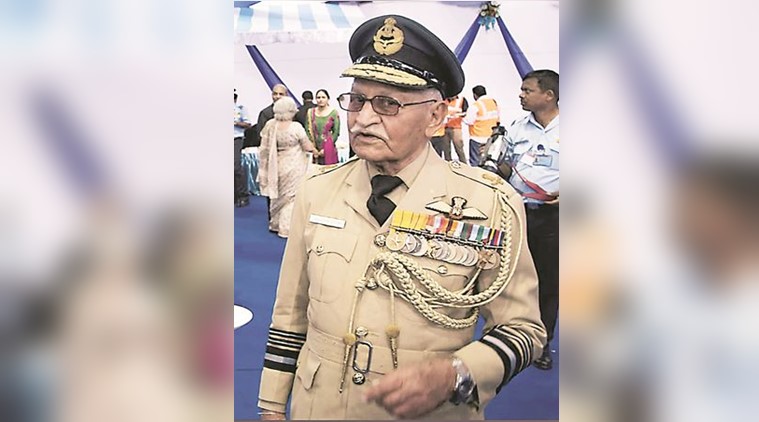Air Marshal Randhir Singh was born on 1 January 1922 and was commissioned into the Royal Indian Air Force on 21 December 1942. He was posted at Risalpura airbase, Naushera near Peshawar, presently in Pakistan. He saw active service during World War II. At the time of Partition, he along with 21 other officers opted to serve in India.
A few days before Independence, some officers including Randhir Singh, shifted their 12-aircraft Tempest fleet to Palam airbase, Delhi. On 15 August 1947, he was member of the fleet that flew past the Red Fort in New Delhi under the command of Group Captain Arjan Singh.
During a flight on 26 October 194, he confirmed that Srinagar-Baramula road was clear and the raiders had not reached the Srinagar airfield. I SIKH was transported by air to Srinagar. The aircrafts were not equipped with radio or headphones then and the pilot was given some landmarks for target identification. The raiders could not reach Srinagar due to the blocks set up by I SIKH and few but effective air attacks. He flew 185hours of operational flying in Tempest aircraft and set a magnificent example, engaging targets with vigour and zeal even though his aircraft had been hit by enemy fire on several occasions. He would gently describe the damage to the aircraft and carry on with the mission.
Once, while crossing the border on a flight, he noticed smoke rising from a location. He saw Pakistani soldiers getting ready to attack. He bombed the site and foiled the attack on India. This was the first major air attack by India after Independence. By September 1948, the raiders and Pakistani soldiers had tightened the ring around Poonch. Enemy build up around Poonch indicated likely assault on the town. The local population faced massacre. Singh carried out bombings on the enemy build up and helped to save the city and its population. He acted with confidence, zeal and courage which inspired other pilots of his unit. He was awarded Vir Chakra for his outstanding service and leadership. He held several command and staff appointments with distinction. He brought a squadron from number plate condition to fully operational status in a short time. Similarly, he took over the command of an important flying squadron in 1959 and developed it into a unit fit for operations, in a short time.
In 1962, the political leadership in the country had decided not to use the air force to avoid escalation. Randhir Singh was commander of 106 Squadron which had been recently equipped with Electric Canberras for strategic reconnaissance. He flew some missions and reported that China had no aircraft in Tibet. Use of air force would have greatly helped the ground troops. It could have stopped the disaster which occurred. He himself flew some sorties with commendable results until the end of the Chinese aggression.
During the 1965 Indo-Pak War, Singh successfully directed the operations for defence of the air base under his responsibility. He completely disregarded his personal safety or comfort. He was later awarded AVSM ( Ati Vishisht Seva Medal).
In 1965, Pakistan had carried out pre-emptive air strike on some of the airfields. Similar attacks were launched in 1971 also. Adampur air base had two squadrons of Sukhoi 7 and one squadron MIG-21. It could have been a prime target for pre-emptive strike by Pakistan. During the 1971 conflict, Singh was the commander of Adampur airbase. He organised the defence around the base well, converting it into a fortress. The supporting services at the air base were organised so well that the desired flights in support of ground troops continued. Singh was also a recipient of PVSM (Param Vishisht Seva Medal).
After his retirement on 30 April 1978, Randhir Singh settled down in Chandigarh where he took active interest in civic and veterans’ welfare. After a brief illness, he passed away on 18 September 2018 and was cremated with full military honours.


 [/column]
[/column]